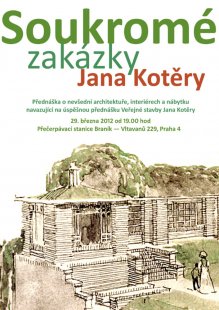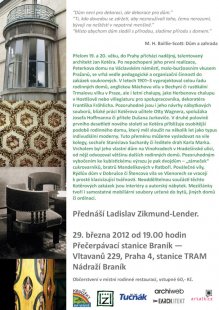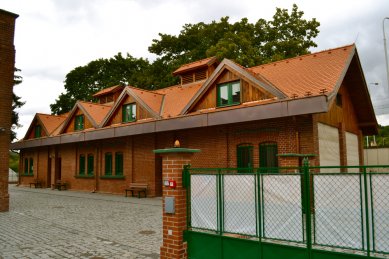Private Commissions of Jan Kotěra
Lecture on extraordinary architecture, interiors, and furniture, following the successful lecture on Public Buildings by Jan Kotěra.
Presented by Ladislav Zikmund-Lender
Pump Station of the Vršovice Waterworks in Braník, Vltavanů 229, Prague 4 - Braník, TRAM stop Nádraží Braník
March 29, 2012, at 7:00 PM
Admission 60 CZK
Organized by: Kroužky na Vltavě, s. r. o., and Ladislav Zikmund-Lender















